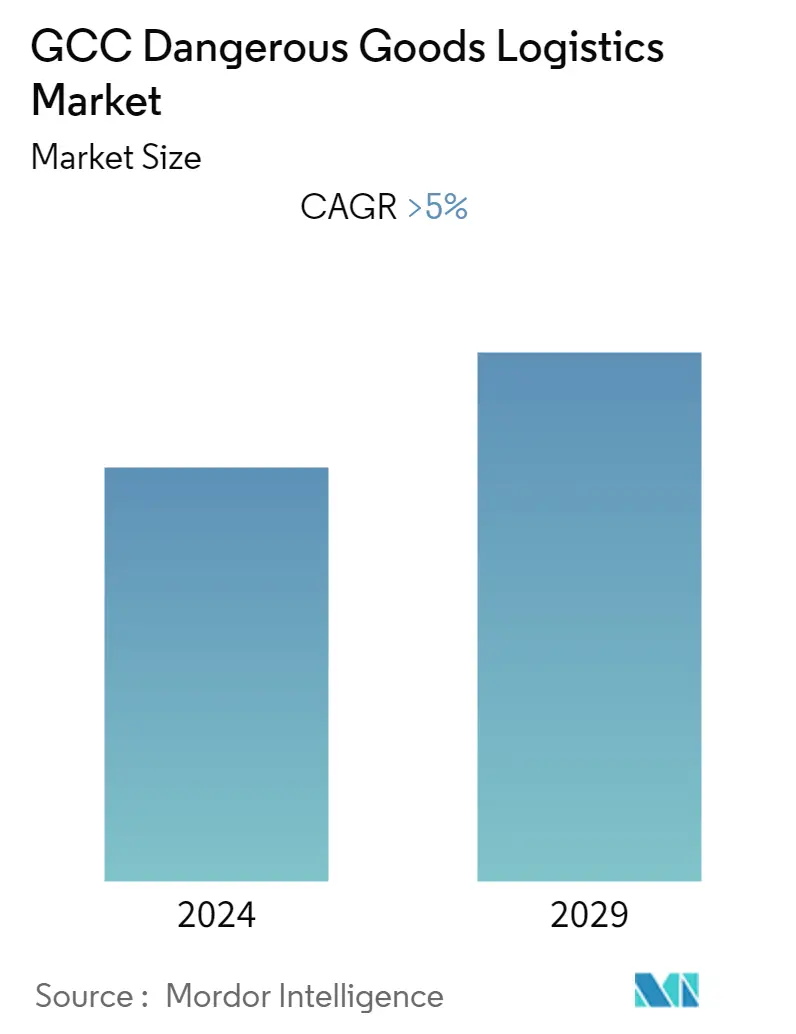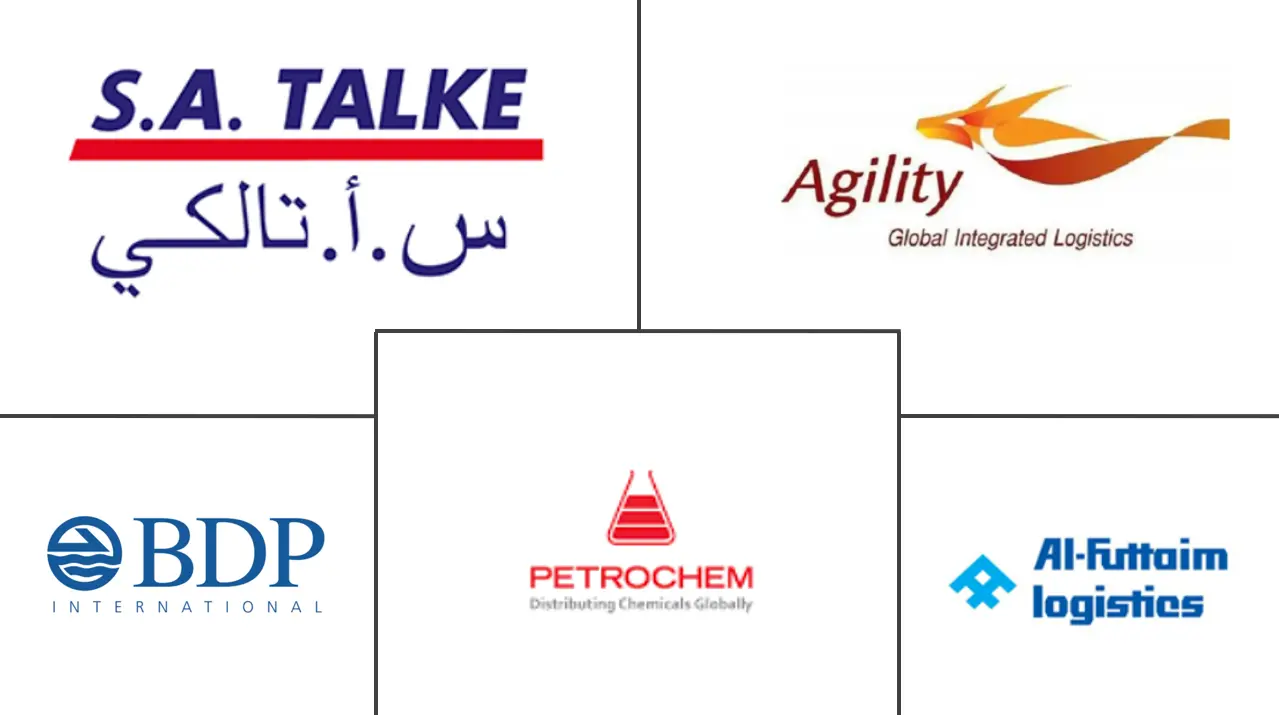Market Size of GCC Dangerous Goods Logistics Industry

| Study Period | 2020 - 2029 |
| Base Year For Estimation | 2023 |
| Forecast Data Period | 2024 - 2029 |
| Historical Data Period | 2020 - 2022 |
| CAGR | > 5.00 % |
| Market Concentration | Low |
Major Players
*Disclaimer: Major Players sorted in no particular order |
Need a report that reflects how COVID-19 has impacted this market and its growth?
GCC Dangerous Goods Logistics Market Analysis
The GCC Dangerous Goods Logistics market is expected to grow at a CAGR of more than 5% during the forecast period (2023-2028).
The COVID-19 pandemic fueled the growth of the dangerous goods logistics market. The increasing demand for medical oxygen in hospitals has resulted in a greater need for transportation. Furthermore, nuclear medicine, viral samples, healthcare hazardous substances, and clinical waste such as surgical equipment must be transported. Due to the lockdowns caused by the COVID-19 pandemic, the transportation of hazardous goods became easier and faster.
Aside from the fact that the rules for shipping dangerous goods are updated every year, the need to do so is also expected to grow every year. Between the growing need to ship lithium batteries and the already established gas and oil industries in the region, the market for dangerous goods is higher than it has ever been. This will increase the need for UN packaging, training, labels, and placards.
Digitization is the underlying solution to successfully transporting hazardous materials. In transportation operations, a digital supply network acts as a technology platform for inter-business processes and supply chain relationships. It connects suppliers, buyers, shippers, and third-party logistics providers, allowing them to better communicate, collaborate, and conduct business with each other. Manual processes like submitting a purchase order, acknowledging order acceptance, and confirming shipment are automated, with paper or email translated into appropriate formats where the document can be shared with others electronically.
